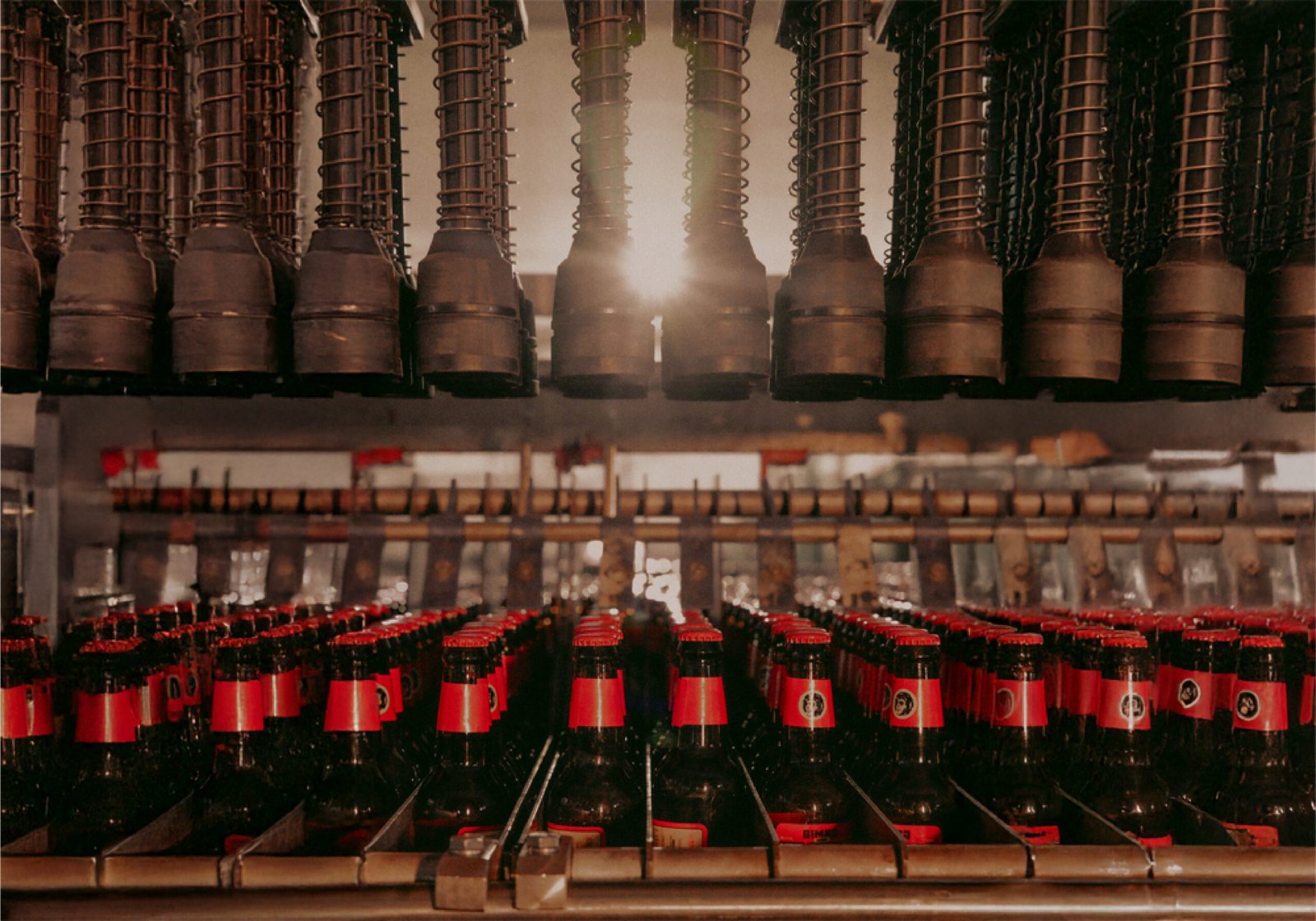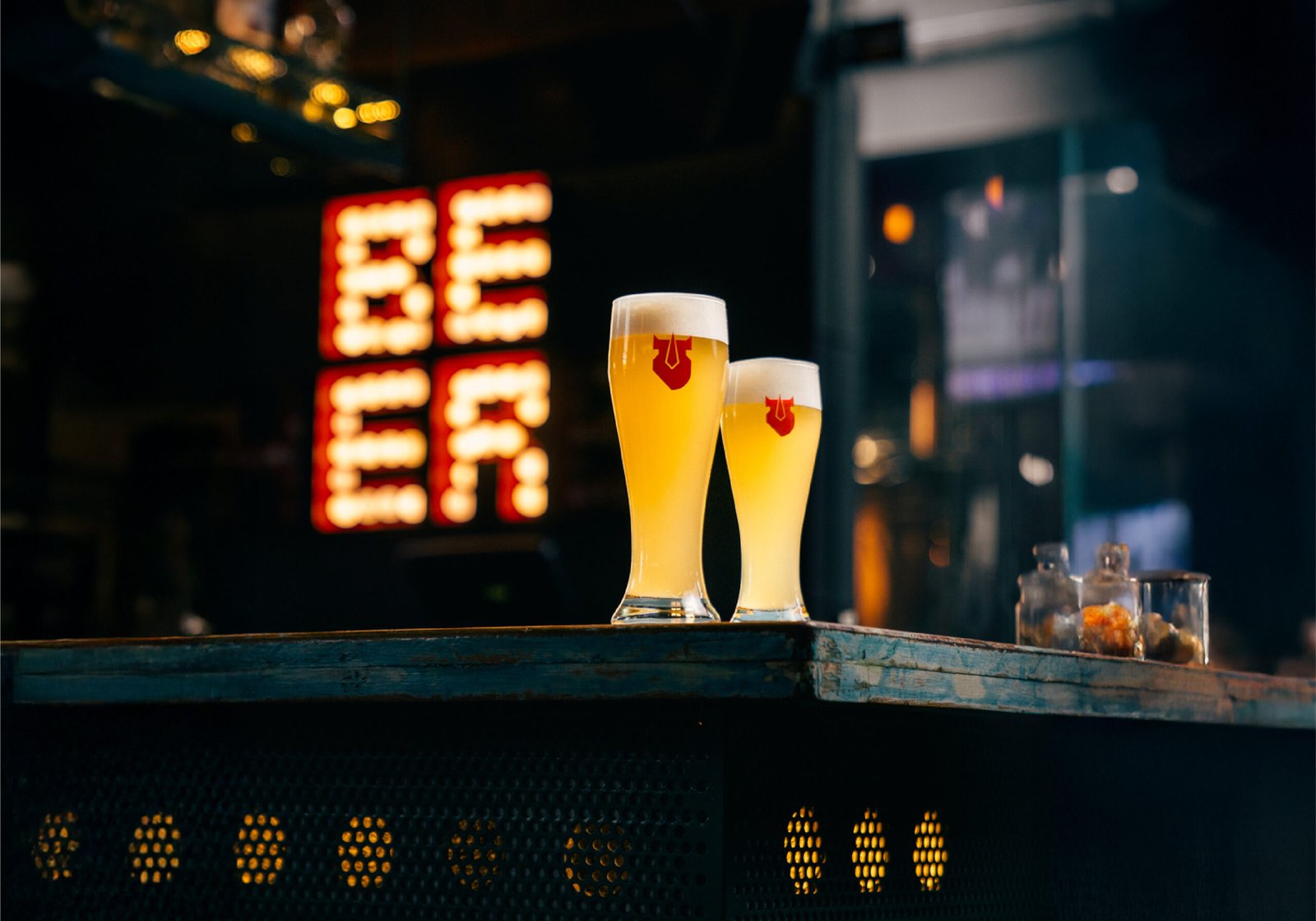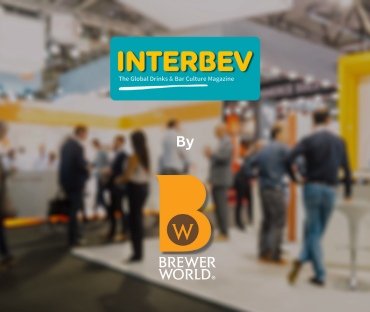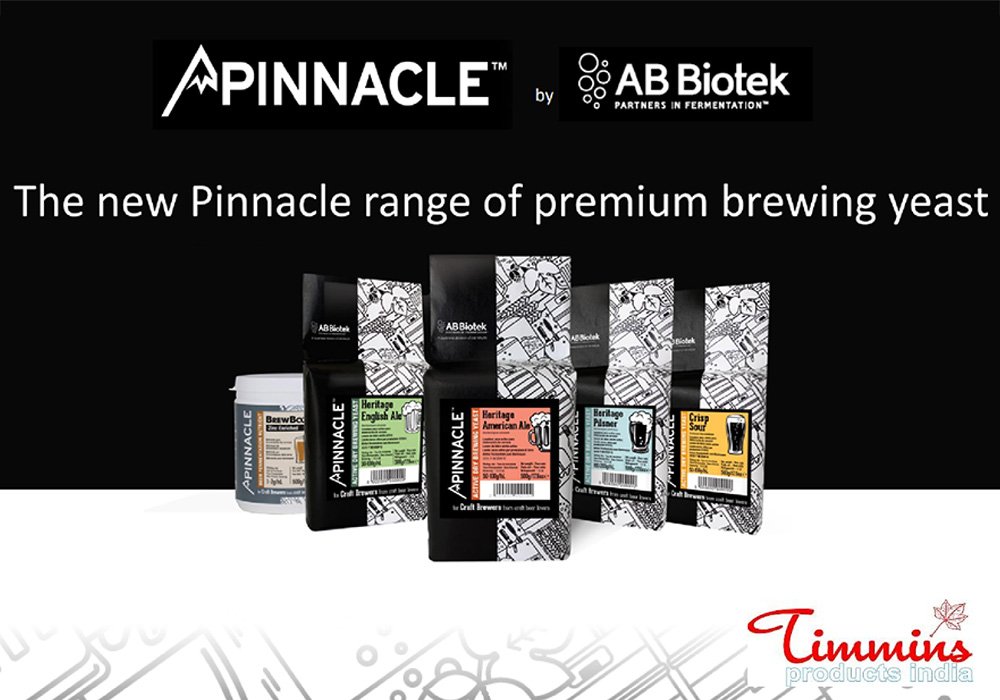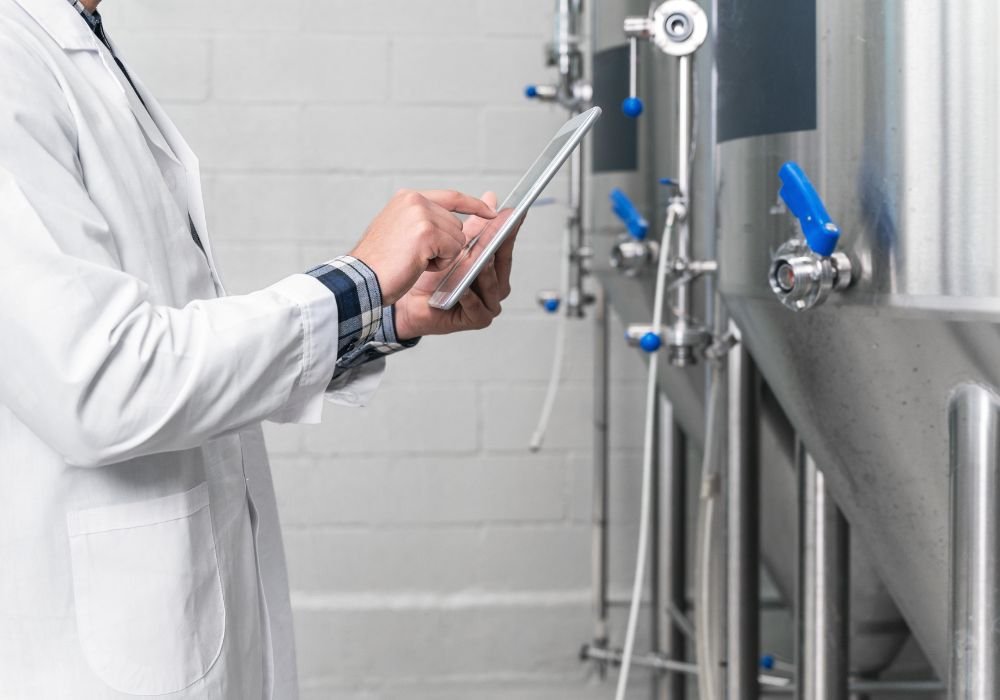
WINFRIED SAUER
Beer is the world’s oldest and most widely consumed alcoholic beverage and the third most popular drink in beverages sector-after water and tea. It is produced by the brewing and fermentation of starches mainly derived from cereal grains—most commonly malted barley, although wheat, maize (corn), rye and rice are widely used. Most beer is flavored with hops, which add bitterness and act as a natural preservative, though other flavorings agents, such as herbs or fruit may occasionally be included.
The strength of beer is usually around 4% to 6% alcohol by volume (abv) though may range from less than 1% abv, to over 20% abv in rare cases.
Ales v/s Lagers
- Ales can be referred to as being “fruity, rounded, and complex,” and lagers can be referred to as being “crisp, clean, and angular”
- Ales ferment typically between 64 and 70 degrees F, and lagers ferment typically between 52 and 58 F
- Lagers need bottom fermenting yeasts in comparison to ales which need top fermenting yeasts
Basic concept
A microbrewery is a small brewery with a limited production capacity which because of necessity, produces labor intensive hand-crafted beers. The term and trend originated in the United Kingdom in the late 1970s to describe the new generation of small breweries which focused on producing traditional cask ale.
A brewpub/Brauhaus are a pub or restaurant that brews beer on the premises. Some brewpubs, such as those in Germany, have been brewing traditionally on the premises for hundreds of years.
Main considerations for setup of Brewpub/microbrewery in India
- Space requirement
General requirement of space is around 800-1500 sq. ft., depending upon the capacity and the type of equipments
- Capacity & Sale calculation
Specialized forecasting for the estimated sales generation (location, sitting capacity, miscellaneous factors) & the number brews that can be taken per week (8 hr/brew) depending on which the actual production capacity can be calculated
- Areas of Importance in setting up Micro Brewery/Restaurants
- Exhaust
- Solid Waste Products (Spent Grain)
- Water requirement
The principal areas of water usage are
- Mashing
- Sparking in Lauter tun
- Clean in Place (CIP)
- Boiler
- General Cleaning
- Laboratory
Heating option
I. For boiler
Electrical element
Natural Gas
Propane
II. For Kettle
Electrical element
1. Internal calandria
2. External calandria
Steam from boiler
Electrical Load & Consumption:
Generally, around 2KV electric load and consumption should be approx. 1000KWatt, for brewing days. The main equipment’s that need electrical input are:
- Heating system-Electrical for boiler (kettle, if any) & hot liquor tank.
Number of Beer Styles
For a brewpub with around 3 hl-5 hl system, it is sufficient to have around 4-6 varieties of beer on tap. These can be frequently changed according to customer response and to have new styles in the menu, but it should not be frequent for the popular styles.
Also the number of storing tanks and the type of beer (Ale/Lager) based on its processing time, is an influencing factor. The ales take less time in processing than lagers and it should be noticed as which style is more accepted so that higher production batches are dedicated for the same. This means the number of styles is roughly proportional to the number of beer storage tanks (Bright Beer Tanks; BBTs), which also influences the space requirement issue.
The basic beer styles chosen for a brewpub can be obtained from the list given earlier, however a general style list is given as below:
1. India Pale Ale (IPA)
2. Stout (Imperial/Dry/Irish-Guinness style)
3. Wheat Beer
4. Porter
5. Pilsner
6. Bock
7. German lager
8. Cider
9. Barley wine
10. Scottish/ American/ English Ale
Serial no 1-3 & 9-10 are ales, rest are lagers. Generally, a ratio of 70:30 for Ales: lagers are chosen by most microbreweries, which can also be adjusted according to the market.
Cooling options
Two types of chilling option can be opted for in a brewpub.
1. Glycol jacketed tanks:
2. Cold room
Dispensing options:
The dispensing techniques however can be of different types,
The main influencing factors in dispensing are:
1. The distance of the bar and the BBT use of booster pumps and FOB (Foam on Beer).
2. Pressure of beer in tanks (approx. 1.5 psi).
3. Pressure of CO2 injected in to the tank through the carbonation (diffuser) stone, should in equilibrium or slightly more than the pressure inside tank, for foam regulation.
Brewing Equipment Engineered type
Based on the style, type and number of brews needed according to capacity, there are various brewing equipment engineering designs that one needs to select. Like a normal large scale brewery, a brewpub has all the equipment’s only of a much smaller scale. The basic ones are:
1. Mash tun/ lauter tun combined with hot liquor tank and kettle-2 vessel brew house
2. Mash tun/ kettle and lauter tun combined with whirlpool-2 vessel brew house
3. 4 vessel dedicated brew house
4. Mash tun/ lauter tun and kettle/whirlpool- 2 vessel brew house
A separate mash tun and kettle allows the brew master to have more than one brew per day in lesser time, thus achieving more flexibility in operation.
Milling requirements
A malt mill of adequate capacity is required.
Use of Adjuncts
In commercial breweries use of adjuncts (rice flakes, wheat, sugar, corn etc) is encouraged to increase the fermentable sugar concentration for higher ABV% (alcohol % volume by volume). However according to German brew laws (Reinheitsgebot-law), barley malt should be the only grist material to be used in making any kind of beer. But this is not compulsory. The adjuncts can also contribute to characteristic flavor but pure barley beer is adjudged to be the best in class of draught beers. Adjuncts are also used to replace amount of barley malt in beer, for economic considerations.
Waste water disposal
A huge quantity of water will be drained off each brew day for various CIP and other cleaning practices along with the condensation trap discharge (if any) and RO machine wastage. This needs to be channeled through underground drain lines, with steel grids that can be easily cleaned.
However, in normal course of production of beer, the water is re-used for taking the next brew and this water can also be used for kitchen cleaning purposes or for gardening purposes.
As per German emissions standards all the major German companies produce plant & machinery that adhere to this law.
- Degree of automation of the brewing system
A PLC SCADA control can be setup with the control panel along with pneumatic valves attached to air-compressors which are specially programmed to automate specific regions or total brewing process. - This is a new development in brewing industry with great returns in form of efficiency and reduction in manpower requirement.
- Malt room
A malt room should be in place close to the brewery for storing the malt to be later used in subsequent brews, for at least a week. - Laboratory
A room (with aseptic conditions) should be dedicated for laboratory analysis of the beer and the raw materials. It should have a minimum of 80 sq. feet of space.
Excise, License, tax, duty & other legal requirements
It’s a regional State subject that needs to be followed as per the Government notifications.
Other licenses required for the setup:
1. Commercial Electricity line
2. Commercial water line-Municipality/underground borewell water
3. Land registration/ Lease sanction
4. Company registration
5. Waste water disposal certificate from pollution control board
6. Fabricated equipment qualitycertificate from third party inspection (Lloyds, SGS, etc.)
7. Water quality testing certificate from quality control labs (SGS, etc.)
8. QC certificate of finished beer from govt.approved QC labs, done randomly.
Human resource and man power requirements
Generally, 4 kinds of manpower are required in a brewpub operation.
They are:
1. Brew Master
2. Assistant Brew Master/Microbiologist
3. Bar Manager
4. Waiters will be taught dispensing under the supervision of the Brewmaster. They should be able to converse well in local languages, Hindi and English, preferably hotel management graduates.
Nature of raw materials procured
1. Malt
2. Hops
3. Yeast
4. Brewing Auxiliaries: Due to lack of brewing enzymes in mash in some cases, and other such deficiencies in the mash additional brew supplements are added.
Architecture, Floor planning & interiors
The floor plan should be determined based on the capacity and the placement of equipment.
Brewpub Marketing
Unlike commercial beer, marketing for brewpubs follows an altogether different approach. According to government regulations for media broadcast and advertisement, any kind of advertisement that shows any liquor or drinking hard beverages is prohibited in visual, print in audio media. Commercial beer companies have thus come up with innovative marketing strategies:
Conceptualized themed brewpubs
a. Rugged old school machine themed brewpubs
b. Old factory (anno 1900) themed brewpubs
c. New age urban themed neon brewpubs
d. Wooden Irish themed brewpubs
e. Munich (Bavarian) Styled Brewpubs
Location Importance
Brewpubs are located mostly in city center or tourist spots or in places of commercial importance, where large number of people are regularly available. Great styles of beer, combined with ambience, special theme bars and on site brewing, boost sales.
Brewpub kitchen
- A kitchen should in place inside the brewpub for special snacks to go along with the beers.
- Dry snacks/Readymade
- Traditional local delicacies
- Small tidbits of Indian/Continental origin
- Special cooked meals with beer in lunch/dinner (for example Bavarian meals)
A gas bank should be in place with separate exhaust options and drainage, and should be secluded from the brewpub.
This is a basic concept in setting up brewpub microbrewery in general for India.
Conceptualized By Winfried Sauer,
CFB Consulting GmbH - Germany





